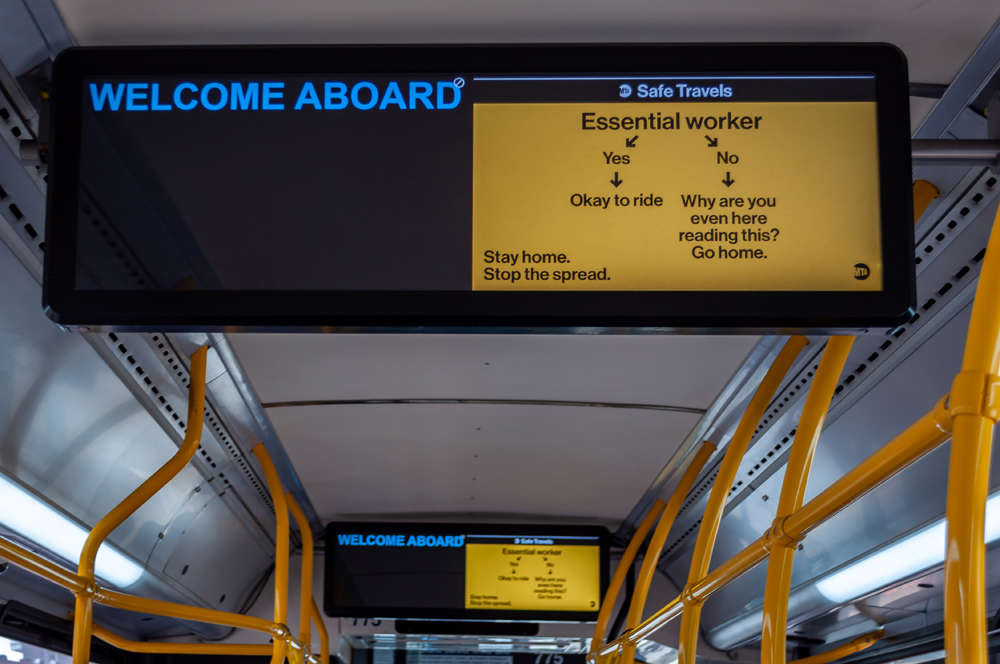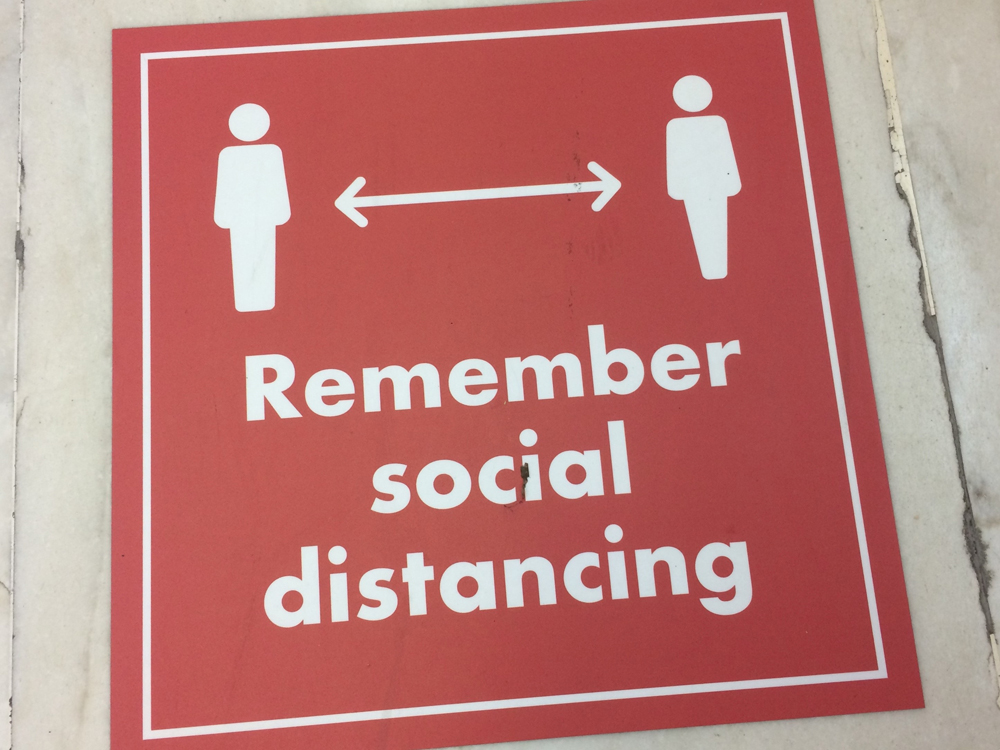
Transport agencies around the world have been stunned by the Covid-19 pandemic and are still responding to it by incorporating various remedial measures to this unprecedented disruption in service. The needed response is staggering.
When the transportation impacts of the pandemic became apparent in the US, transportation agencies gathered in emergency sessions to address the seriousness of the situation. In June, the Mineta Transportation Institute at San Jose State University conducted a National Transportation Finance Summit which identified critical financial issues. It was reported that the State of California could lose up to $20 billion in transportation revenue over the next 10 years due primarily to the loss of fuel tax revenues from reduced driving.
However, after citing the tremendous impact to transportation that the crisis has brought, the tone of the summit was optimistic. The reason? This present crisis is seen as presenting new opportunities for growth: rather than ‘bouncing back,’ the goal expressed was that the industry should ‘bounce forward’.

This is a time to address critical transportation issues - including a healthier transportation environment, developing sustainability and enhancing social equity. New partnerships and funding options will be pursued by breaking out of entrenched patterns. This approach to the pandemic is being duplicated in (online) transportation conferences with similar statements being made about the need now for creative, innovative thinking and decision-making.
The optimism is reflected in both short-term and long-term response measures. In some circles, the cry is heard: “This is unique, we could not have predicted this could have happened, nor could we have adequately prepared for it.”
Yet, although the pandemic and its impact may not have been predicted, there are practical and simple solutions that could have been incorporated to help provide the resiliency needed to quickly respond to any major disruption of service.
There are several examples of transportation organisations which have prepared for the pandemic without actually planning to prepare for it.
Creative thinking
The most significant point to recognise during this pandemic recovery is that their insightful decisions were not made in a crisis situation, but rather in the normal course of day-to-day business – they were the result of creative thinking with a willingness to test and deploy recently developed and promising technologies and mobility options.
However, there are still obstacles and other hindrances to the adoption of things which could have enhanced resiliency when Covid-19 was encountered.
One issue highlighted by the pandemic is that disparities which already existed have been magnified. For Tilly Chang, executive director of the San Francisco County Transportation Authority (SFCTA) this disparity includes housing issues: essential, but low-salaried, workers are really struggling either with how to get to work or with obtaining affordable housing.
In response to this, the Transportation Authority Board in San Francisco expanded funding for an Essential Worker Ride Home Program and the San Francisco Municipal Transportation Agency (Muni) launched an Essential Trip-Card discount for seniors and people with disabilities which allowed them to make essential trips in taxis.
When Covid-19 hit, some of the services and technologies that were instrumental for responding quickly to the new situation were already in use by some agencies. But the interesting thing is that these agencies did not plan on using these services and technologies for a pandemic response. Rather, the decisions to adopt them were the result of thinking ‘outside the box’.
In August, the Eno Center for Transportation sponsored a webinar where exactly this type of thinking – which helped agencies respond quickly to the rapidly-changing conditions of the pandemic - was revealed.
For example, the former CEO of the Regional Transportation Commission (RTC) of Southern Nevada, Tina Quigley, acknowledged that RTC retrofitted the entire bus fleet with physical enclosures four to five years before the pandemic struck. But the purpose of that action was for driver protection - and not for health issues such as with a pandemic.

Of course, installing screens was one of the first steps taken by public transportation organisations in response to Covid as a means of protecting drivers from the virus once service was restored.
At the same webinar, the executive director of the Dallas Area Rapid Transit (Dart), Gary Thomas, said Dart’s GoPass, an integrated discounted reloadable fare payment system developed in 2013, was instrumental when the pandemic first hit.
While GoPass was not designed to be a critical element in a pandemic-type situation, it has certainly been heavily relied upon during coronavirus. The decision to develop GoPass was based upon economics: it was a fraction of the cost of other smart card technologies which Dart could not afford.
Dart’s low-cost entry into mobile payment has since become very effective and reliable. GoPass has now become a key element as the agency moves into Mobility as a Service (MaaS), offering greater flexibility to customers’ travel choices. The lesson here is that decisions made to acquire even relatively cheap technology today may have far greater benefit in future, unanticipated situations.
Other transportation agencies in the US are also in the process of developing and implementing a MaaS or Mobility On Demand (MoD) service. In September, MaaS America conducted a series of webinars which raised controversial issues that will need to be resolved as MaaS and MoD services are further developed:
(a) should the public or private sector have the lead?
(b) will MaaS/MoD be developed to favour and subsidise the middle and upper class to the exclusion of the lower class?
(c) will there be resistance to required changes due to established and entrenched relationships, procedures, policies and contractual protocols and habits?
Shortly before the virus outbreak, Miami-Dade Transit ridership was significantly increasing and the agency had recently purchased and implemented hundreds of new buses into its fleet – in addition to new Metrorail trains (the 100th new railcar was put into service in February).
Speed of response
So it was a very promising time - but then, of course, ridership plummeted. However, according to Alice Bravo, director of Miami-Dade Transit, this is a prime time for innovation and speed of response – and that response was enhanced by recent action that had been under consideration for some time: to replace overnight service (midnight to 5am) with an Uber-Lyft partnership.
Although this action was not based upon the pandemic, it has been a tremendous asset in responding to the Covid impact - which has allowed for more flexible procurement rules due to this being an emergency situation.
It is important to reiterate that all these examples do not negate the need for specific pandemic planning. But they do emphasise the immediate benefits of creative, innovative forward thinking in decision-making.
In fact, advanced planning for a pandemic was documented in the US Department of Homeland Security’s Pandemic Influenza Preparedness, Response, and Recovery Guide for Critical Infrastructure and Key Resources as far back as 2006.
The document was developed primarily to stimulate the US private sector to act immediately to assist business and industry to prepare for any possible pandemic. Annexes were later developed and periodically updated that provided the transport sector specific guidelines for highways and motor carriers, railroad, mass transit, maritime, aviation and emergency services and postal shipping.
It is vitally important to recognise that, in addition to whatever specific pandemic or emergency-response preparations are developed, it is the day-to-day optimistic, forward-thinking mindset of being aware of trend-setting technologies and user services that could accomplish the possible changing vision and goals of your organisation.
And how do we do this? By keeping abreast of the advances being made in the industry - such as that information presented in ITS International - and by changing our immediate response to new innovative ideas from ‘Why it can’t be done?’ to ‘How it can be done?’
 ABOUT THE AUTHOR:
ABOUT THE AUTHOR:
International transportation research advisor Ronald E. Boénau is former ITS Transit Division chief at USDoT and is a member of the TRB International Coordinating Council











